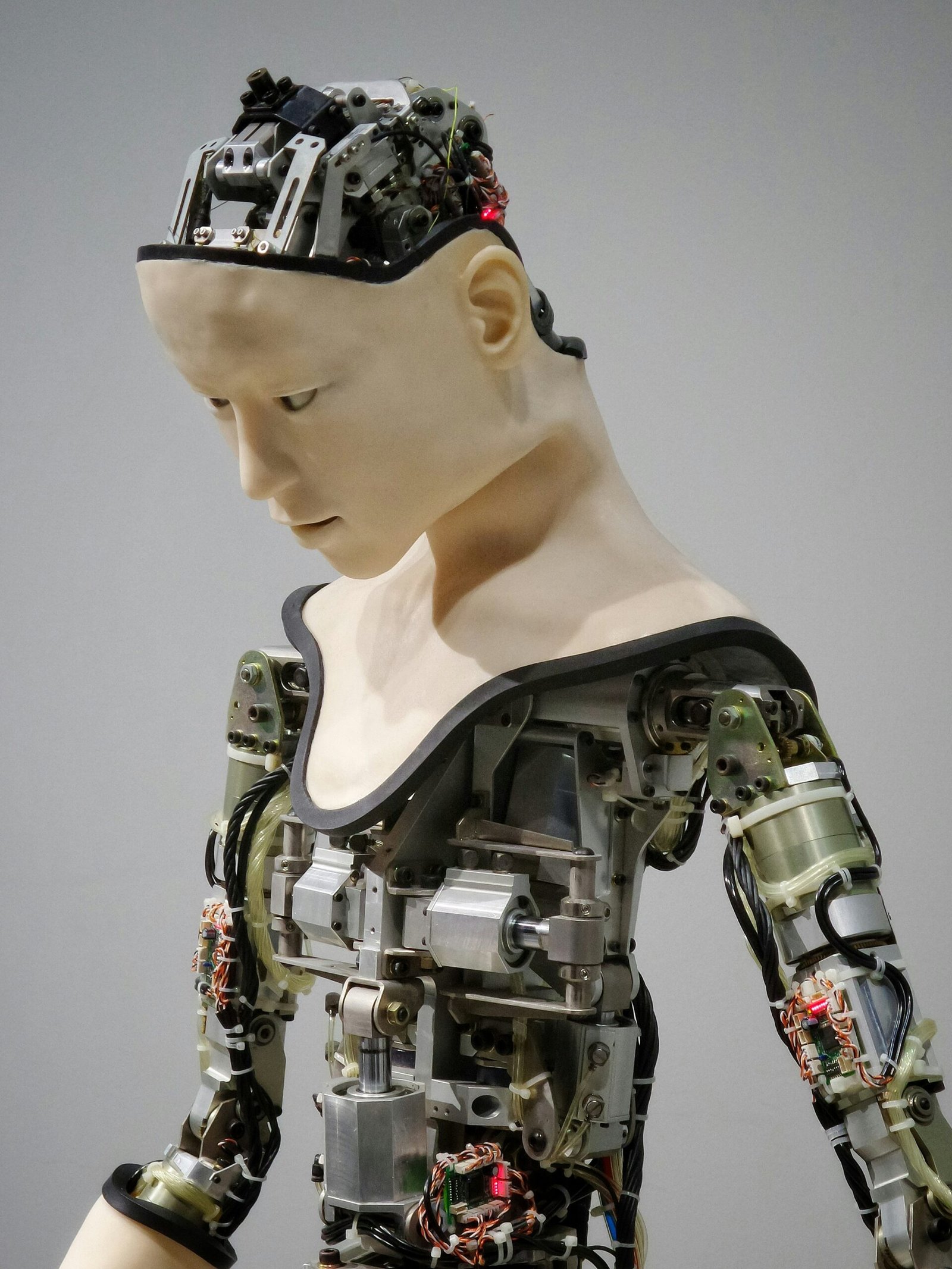Microsoft Brings Copilot to Classic Outlook: Enhancing Code Completion and Suggestions for Older Versions

Photo by Dmitry Novikov on Unsplash
Microsoft’s Copilot is an advanced AI-powered tool that has significantly transformed the landscape of software development. Originally designed to assist developers with code completion and suggestions, Copilot leverages machine learning to understand context and provide intelligent recommendations. This tool can predict and generate lines of code, helping to streamline the coding process and enhance overall productivity. The integration of Copilot into modern development environments has been a game-changer, enabling developers to focus more on creative problem-solving rather than mundane coding tasks.
The significance of Copilot in today’s software development ecosystem cannot be overstated. By providing real-time code suggestions and autocompletions, it reduces the time spent on writing boilerplate code and debugging syntax errors. This not only accelerates the development cycle but also improves code quality by suggesting best practices and identifying potential issues early in the coding process. The initial deployment of Copilot was primarily concentrated on newer platforms, where its capabilities could be fully utilized with the latest development tools and environments.
However, recognizing the diverse needs of its user base, Microsoft has now extended Copilot’s functionalities to older versions of Outlook. This move is particularly significant as it bridges the gap between cutting-edge AI technology and legacy systems that are still widely in use. The inclusion of Copilot in classic Outlook versions ensures that a broader range of users can benefit from its advanced features, regardless of the version they are using. This development highlights Microsoft’s commitment to enhancing user experience across its product line, ensuring that even those using older software can leverage modern AI advancements to improve their workflow.
The Evolution of Outlook and Its User Base
Microsoft Outlook has undergone significant transformations since its inception, evolving from a basic email client into a multifaceted productivity powerhouse. Initially launched as part of Microsoft Office in 1997, Outlook was designed to streamline email communication and calendar management. Over the years, it has incorporated an array of features such as task management, contact management, note-taking, and web browsing, making it an indispensable tool for both personal and professional use.
The early versions of Outlook were primarily focused on providing a robust email experience. However, as the digital landscape changed, so did user needs. Microsoft responded by integrating advanced functionalities, including improved search capabilities, enhanced security features, and seamless integration with other Microsoft Office applications. These enhancements have made Outlook a comprehensive solution for managing various aspects of daily life, from scheduling meetings to organizing tasks and storing important contacts.
Despite the release of newer versions, a significant portion of the Outlook user base continues to rely on older versions of the software. This diverse user base includes individuals and organizations that have established workflows around these older versions and may not have transitioned to the latest updates. Reasons for this continued usage range from compatibility with existing systems to user familiarity and the high costs associated with software upgrades.
Recognizing the importance of catering to this extensive and varied user demographic, Microsoft has introduced Copilot to classic versions of Outlook. This move ensures that users who have not upgraded to the latest version can still benefit from modern features designed to enhance productivity. By integrating Copilot, Microsoft aims to provide these users with advanced code completion and suggestion capabilities, thereby improving their overall experience and maintaining Outlook’s relevance in an ever-evolving technological landscape.
What is Copilot and How Does It Work?
Copilot, developed by Microsoft in collaboration with OpenAI, is an advanced AI-powered tool designed to assist users with various coding tasks. Its primary functionality revolves around code completion and suggestions, aiming to significantly enhance productivity for developers. By leveraging sophisticated machine learning models, Copilot can understand the context of the code being written and provide relevant suggestions that align with the developer’s intent.
At the core of Copilot’s capabilities are large-scale language models, particularly the Codex model, which is an evolution of OpenAI’s GPT-3. These models have been trained on vast amounts of publicly available code from repositories like GitHub, enabling them to generate code snippets, functions, and even entire modules based on the input provided by the user. This extensive training allows Copilot to offer contextually appropriate code suggestions that can help streamline the coding process.
When a developer begins typing, Copilot analyzes the code in real time, predicting the next segment the user might need. This is achieved through an intricate understanding of programming languages, libraries, and frameworks, which allows the AI to foresee logical continuations and suggest them proactively. For instance, if a developer is writing a function in Python, Copilot can suggest the next line of code or even complete the function based on the patterns it has learned from similar code structures.
Moreover, Copilot’s ability to learn from user interactions means it can adapt to individual coding styles and preferences over time. This personalization aspect ensures that the suggestions become more accurate and helpful, reducing the need for manual corrections and adjustments. The integration of Copilot into classic Outlook is a significant advancement, as it brings modern AI-driven code assistance to older versions, ensuring that developers can benefit from enhanced productivity regardless of the software version they are using.
Challenges of Integrating Copilot into Classic Outlook
Integrating Copilot into classic versions of Outlook presented a series of technical and logistical challenges for Microsoft. One primary issue was compatibility. Older versions of Outlook were not initially designed to support advanced AI functionalities, making it necessary for Microsoft to develop solutions that could bridge the gap between legacy software architecture and modern AI capabilities. This involved significant updates to ensure that Copilot’s code completion and suggestion features could operate smoothly within the constraints of older systems.
Another major obstacle was the need for backward compatibility. Microsoft had to ensure that any updates or changes made for integrating Copilot did not disrupt the existing functionalities of classic Outlook. This required rigorous testing and validation processes to ascertain that the new features would seamlessly integrate without causing interruptions or degradation in performance. Additionally, ensuring that Copilot’s AI-driven features were both effective and efficient within the limited processing power of older machines added another layer of complexity to the integration process.
Logistically, rolling out these updates to a wide user base posed its own set of challenges. Users of classic Outlook are often spread across various regions and industries, each with distinct configurations and usage patterns. Microsoft needed to create a universal update mechanism that could cater to this diverse user base while maintaining the integrity and security of the system. This also involved extensive user education and support to help users transition smoothly to the enhanced functionalities provided by Copilot.
In conclusion, the integration of Copilot into classic versions of Outlook was not merely a technical upgrade but a multifaceted endeavor that required meticulous planning and execution. The successful incorporation of Copilot’s AI capabilities into older versions of Outlook stands as a testament to Microsoft’s commitment to enhancing user experience across all its platforms, regardless of their age or technical limitations.
Microsoft’s integration of Copilot into classic versions of Outlook represents a significant leap forward in productivity and functionality. One of the standout features is the improved email drafting capability. Copilot leverages AI to offer real-time suggestions, helping users craft more precise and effective emails. Whether it’s suggesting appropriate salutations, refining the wording, or even checking for tone consistency, this feature ensures that every email sent meets high standards of professionalism and clarity.
Another noteworthy enhancement is the automated suggestions for calendar entries. Copilot can analyze the content of emails to identify potential meeting times, locations, and participants, and then propose these as calendar events. This intelligent feature reduces the need for manual data entry, streamlining the scheduling process and ensuring that important details are not overlooked.
For users who incorporate coding tasks within their Outlook environment, Copilot offers enhanced coding assistance. This includes code completion suggestions and syntax highlighting, which facilitate smoother coding workflows. By integrating these capabilities directly into the Outlook interface, Microsoft ensures that developers can maintain their focus and productivity without needing to switch between multiple applications.
Additionally, Copilot’s ability to learn from user behavior and adapt over time cannot be overstated. The AI-driven suggestions become increasingly personalized, aligning more closely with individual preferences and work habits. This continuous learning mechanism ensures that the assistance provided by Copilot remains relevant and helpful, further enhancing the overall user experience in classic Outlook.
The integration of Copilot into older versions of Outlook underscores Microsoft’s commitment to making advanced tools accessible across its suite of products. By bringing these features to classic Outlook, Microsoft enables users to benefit from state-of-the-art AI capabilities without necessitating an upgrade to the latest software version. This strategic move not only enhances the functionality of older software but also aligns with a broader objective of improving productivity and user satisfaction across the board.
User Experience and Feedback
The introduction of Copilot to classic Outlook has generated a wave of feedback from early adopters, who have shared a diverse range of experiences. Many users have reported notable productivity improvements, particularly in the realms of email composition and task management. Jane Doe, a long-time Outlook user, remarked, “With Copilot, drafting emails has become significantly faster. The AI’s suggestions are usually spot-on, saving me a considerable amount of time.”
Another user, John Smith, highlighted the benefits of Copilot’s enhanced code completion features. “As someone who often embeds code snippets in emails, the predictive text and completion capabilities of Copilot have been a game-changer. It not only speeds up my workflow but also reduces the margin for error.”
However, the implementation of Copilot has not been without its challenges. Some users have pointed out that while the AI-driven suggestions are generally accurate, there are instances where the recommendations do not align perfectly with the user’s intent. Emma Brown mentioned, “Occasionally, Copilot suggests phrases or completions that are slightly off the mark. It’s not a dealbreaker, but it does mean I have to review suggestions more carefully.”
Moreover, there have been calls for greater customization options within Copilot. Users like Michael Lee have expressed a desire for the ability to tailor the AI’s suggestions to better fit their unique communication styles. “It would be great if Copilot could learn and adapt more to my specific preferences. Sometimes, the suggestions feel a bit generic,” he stated.
Despite these minor drawbacks, the overall reception of Copilot in classic Outlook has been positive. Users appreciate the increased efficiency and the innovative integration of AI capabilities into their established workflows. As Microsoft continues to refine Copilot based on user feedback, it is likely that the tool will become even more adept at meeting the diverse needs of its user base.
Future Prospects and Updates
As Microsoft continues to evolve its suite of productivity tools, the integration of Copilot into classic Outlook represents a significant leap forward. Looking ahead, there are numerous potential developments and updates that Microsoft might introduce to further enhance Copilot’s capabilities. One anticipated enhancement is the refinement of the AI’s contextual understanding, enabling it to provide even more accurate and relevant code completion suggestions. This could involve advanced machine learning algorithms that learn from user behavior and adapt to individual preferences over time.
Another potential feature on the horizon is the incorporation of natural language processing (NLP) capabilities. This would allow Copilot to understand and process user queries in a more human-like manner, facilitating smoother interactions and more intuitive assistance. For example, users could ask Copilot to draft emails, manage calendar events, or automate routine tasks, all through conversational commands. This would significantly streamline workflow and enhance productivity for users of older Outlook versions.
Moreover, Microsoft may explore the integration of Copilot with other Office 365 applications, creating a seamless and interconnected ecosystem. Such interoperability could allow users to leverage Copilot’s suggestions and code completion features across multiple platforms, from Word to Excel, thereby fostering a more cohesive and efficient work environment. In addition, there is the potential for increased customization options, allowing users to tailor Copilot’s functionalities to their specific needs and preferences.
In terms of ongoing support, Microsoft is likely to continue providing regular updates to ensure that Copilot remains compatible with classic Outlook versions. This includes security patches, performance enhancements, and feature expansions. By maintaining a robust support framework, Microsoft can assure users of older Outlook versions that they will not be left behind in the rapidly advancing technological landscape. Ultimately, the future of Copilot in classic Outlook appears promising, with a wealth of innovative tools and features poised to further empower users.
Conclusion: The Impact of Copilot on Productivity
Microsoft’s integration of Copilot into classic Outlook marks a significant milestone in the realm of productivity tools. By bridging the gap between older versions of software and cutting-edge AI technologies, Microsoft ensures that a broader range of users can harness the power of advanced code completion and suggestions. This development is not merely a nod to the past but a strategic move to elevate the user experience across different iterations of Outlook.
Copilot’s capabilities, particularly in enhancing code completion and offering intelligent suggestions, bring a renewed efficiency to classic Outlook. Users who rely on these older versions for their daily tasks now have access to the same sophisticated AI assistance previously reserved for newer platforms. This democratization of technology underscores Microsoft’s commitment to supporting its diverse user base while maintaining the relevance of its legacy software.
The introduction of Copilot into classic Outlook is expected to significantly boost productivity. By automating routine tasks and providing context-aware recommendations, Copilot enables users to focus on more critical and creative aspects of their work. This not only saves time but also reduces the cognitive load, allowing for a more streamlined and efficient workflow.
Furthermore, this initiative could potentially extend the lifecycle of older software versions, providing users with a compelling reason to continue utilizing them without feeling compelled to upgrade immediately. This is particularly beneficial for organizations and individuals with significant investments in their existing software infrastructure.
In summary, the fusion of Copilot with classic Outlook exemplifies how innovative AI can revitalize traditional software. It enhances productivity, fosters inclusivity, and ensures that all users—regardless of the software version they use—have access to the latest advancements in technology. As Microsoft continues to push the boundaries of what’s possible with AI, the impact on productivity and user satisfaction is bound to be profound and far-reaching.






